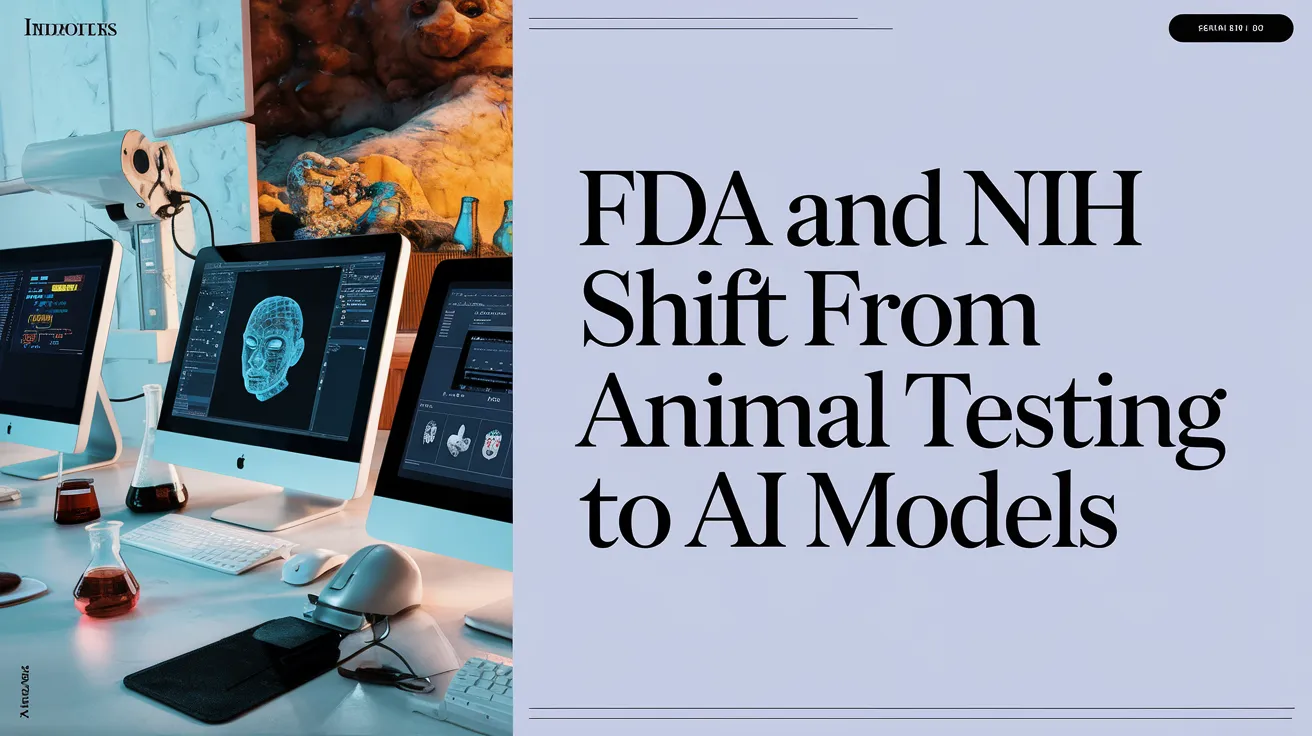FDA and NIH Shift from Animal Testing to AI Models

In April 2025, the U.S. Food and Drug Administration (FDA) released a landmark guidance titled Roadmap to Reducing Animal Testing in Preclinical Safety Studies, which outlines its commitment to advancing New Approach Methodologies (NAMs). This includes in silico models, organoids, and other alternatives to animal testing. The guidance encourages sponsors of Investigational New Drug (IND) applications to adopt scientifically credible alternatives, aiming for more human-relevant, AI-integrated platforms for regulatory submissions.
Earlier, in January 2025, the FDA also released draft guidance titled Considerations for the Use of Artificial Intelligence to Support Regulatory Decision-Making for Drug and Biological Products. This document focused on utilizing AI across the drug development lifecycle and marked a pivotal shift in the agency’s approach to modern scientific evaluation.
The recent announcements from both the FDA and the NIH emphasize the importance of encouraging scientists and biotech firms to embrace computational, experimental, and other human-relevant methods as substitutes for animal research. These alternatives include AI technologies and laboratory-grown organoids, with real-world population health data integrated into evaluations. The FDA expects animal research to become an exception rather than the norm for preclinical safety testing within the next three to five years, as stated in an executive summary available on its website.
The evolution in testing methodologies has significant implications. Joseph Wu, a cardiologist at Stanford Medicine and co-founder of Greenstone Biosciences, expressed optimism that results from animal models often do not translate well to human cases. He indicated that relying solely on traditional models impedes progress in the field of drug discovery.
In response to the FDA’s push towards more ethical and efficient testing methods, the NIH is prioritizing grant proposals that incorporate alternatives to animal research. They have announced the establishment of the Office of Research Innovation, Validation, and Application (ORIVA) to facilitate the development and implementation of non-animal testing methods across its biomedical research initiatives.
Introducing New Tools
The clarity gained from the FDA’s guidance is expected to drive the adoption of innovative technologies, including:
- Advanced Computer Simulations: Organizations are encouraged to use AI and computer modeling to predict drug behaviors effectively.
- Human-Based Lab Models: The FDA is advocating the use of lab-grown human organoids to evaluate drug safety in a more relevant manner.
- Regulatory Incentives: The agency is amending guidelines to allow data from non-animal testing, potentially streamlining review processes.
- Faster Drug Development: The incorporation of advanced methodologies is projected to decrease timelines in getting drugs to market.
This move reflects a growing trend toward integrating AI and advanced computational techniques within regulatory frameworks, a practice that could reshape how drug evaluations are conducted.
As organizations continue to innovate around non-animal methods, the transition presents both opportunities and challenges. Deliberate and informed strategic approaches to intellectual property (IP) and data governance will be necessary to align with the FDA’s new expectations.